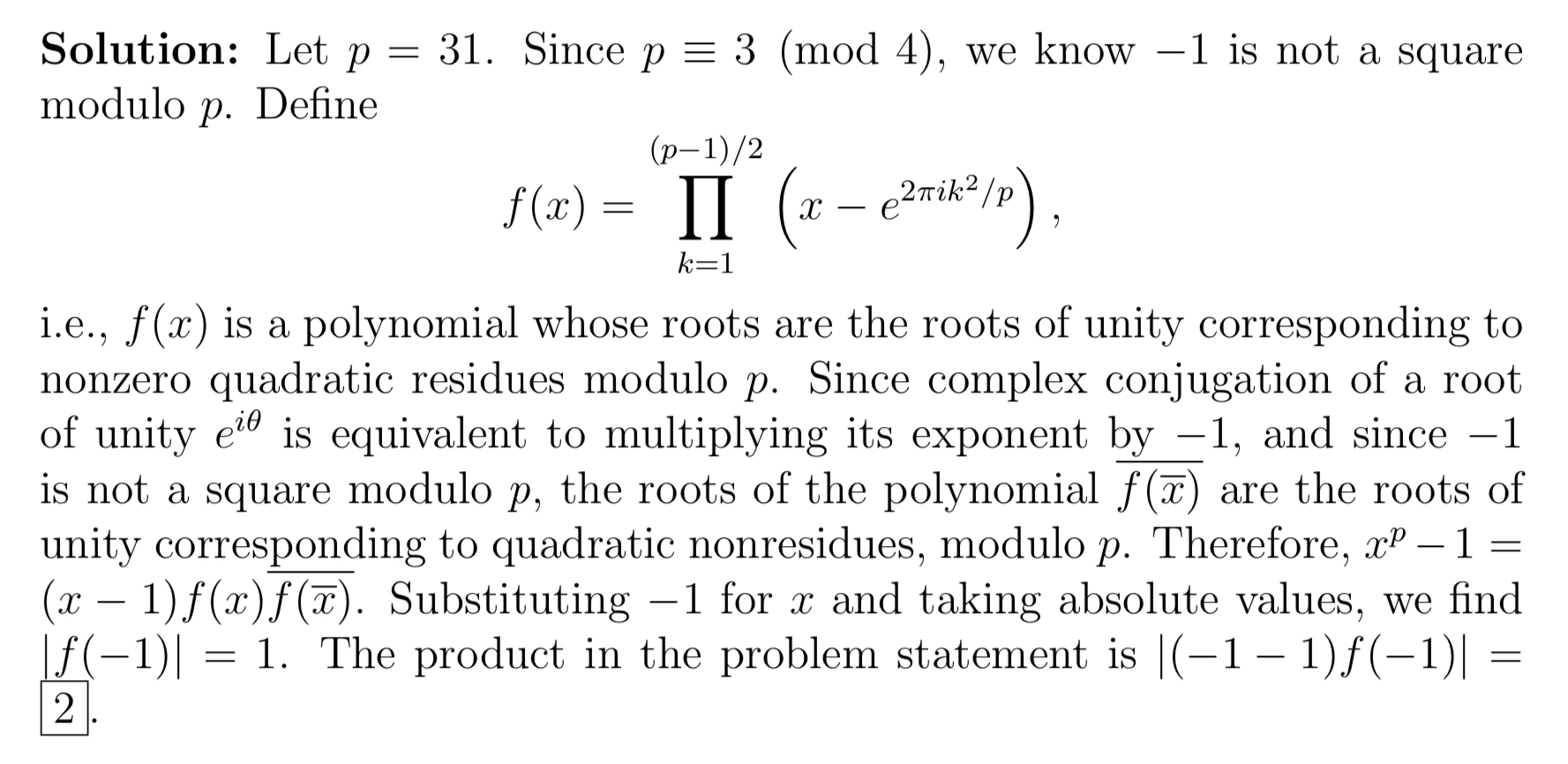Online Course Discussion Forum
MP4G Week 1 Q19 Solution
Hello,
I’m confused on the solution to the MP4G Week 1 homework Q19, which is attached below. There are some steps that I don’t understand:
- Why does p == 3 mod 4 mean -1 is not a square modulo p?
- And, why does -1 not being a square modulo p mean the conjugate of f(x_bar) has roots corresponding to the quadratic non-residues?
Thanks!

Good questions! The topic of Quadratic Residues is worthy of another class of at least 3 hours in number theory, after you have at least grasped Fermat's Little Theorem, Wilson's Theorem, and Chinese Remainder Theorem.
We will talk a little more about it when we are on the number theory topics in a few weeks. Here I will explain a little bit.
1) Why is $-1$ is not a square in mod $p$ when $p\equiv 3\pmod{4}$?
Let's assume $-1$ is a square (i.e. quadratic residue) mod $p$. In other words, there exists a number $a$ such that $a^2\equiv -1\pmod{p}$. Hence we have $a^4\equiv 1\pmod{p}$. According to Fermat's LIttle Theorem, $a^{p-1}\equiv 1\pmod{p}$. Therefore $p-1$ is a multiple of $4$ (think about why this is true: consider $p-1=4k+r$ and see what $r$ can be). This means $p\equiv 1\pmod{4}$, In conclusion, if $p\equiv 3\pmod{4}$, we know $-1$ is not a square.
2) Based on the definition of $f(x)$,
$$\overline{f(\bar{x})} = \prod_{k=1}^{(p-1)/2} \left(x - e^{-2\pi i k^2/p}\right).$$
For each odd prime $p$, among $1,2,3,\ldots,p-1$, half are quadratic residues (QR) and half are quadratic nonresidues (QNR). The QRs are $k^2$ for $k=1,2,3,\ldots,\dfrac{p-1}{2}$. The rest are QNRs.
For $p\equiv 3\pmod{4}$, since $-1$ is a QNR, so is $-k^2$ for all $k$. Thus the roots of the above polynomial $\overline{f(\bar{x})}$ are all distinct from the roots of $f(x)$. If $f(x)$ and $\overline{f(\bar{x})}$ are put together, along with $x-1$, they cover all the roots of unity of degree $p$. The rest of the solution follows.
Social networks